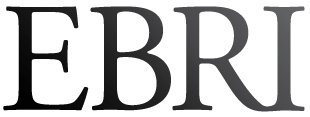Retirement Annuity and Employment-Based Pension Income, Among Individuals Age 50 and Over: 2006; and Finances of Employee Benefits, 1950-2006
The most recent data from the March 2007 Current Population Survey confirm earlier findings that gender, marital status, age, education, and other demographic variables have a significant impact on the likelihood of a worker receiving a retirement annuity and/or employment-based pension income in retirement. Press release EBRI Notes Jan 17, 2008 12 pages
Listening to Consumers: Values-Focused Health Benefits and Education
A relatively new health plan model that its advocates hope will control rising health spending could fail if key consumer education initiatives prove ineffective, according to a study published by the nonpartisan Employee Benefit Research Institute (EBRI). EBRI Issue Brief Jan 15, 2008 24 pages
What Are the Major Sources of Income for Americans Age 65 and Older?
EBRI Fast Facts Dec 12, 2007 2 pages
IRA Assets and Contributions, 2006; and Income of the Elderly Population Age 65 and Over, 2006
IRA Assets and Contributions, 2006: Assets in individual retirement accounts (IRAs) grew 16.5 percent in 2006, reaching a record $4.23 trillion, according to a study released by the nonpartisan Employee Benefit Research Institute (EBRI). (Press release) Income of the Elderly Population Age 65 and Over, 2006: Median income of the elderly increased at an average annual rate of 1.0 percent from 1989–1999 and by 0.34 percent from 1999–2006; elderly women receive a larger share of their income from Social Security than men, and the older a person is, the greater share of his or her income comes from Social Security. EBRI Notes Dec 11, 2007 16 pages
The Future of Employment-Based Health Benefits: Have Employers Reached a Tipping Point?
Some associations representing employers’ interests are suggesting fundamental reforms in the current system of employment-based health insurance, but large employers are not on the verge of dropping benefits, according to a study released by the nonpartisan Employee Benefit Research Institute (EBRI). Press release EBRI Issue Brief Dec 6, 2007 20 pages
How Much Value Do Workers Place on Health Benefits?
EBRI Fast Facts Nov 15, 2007 1 pages
Should Employers Be Required to Provide Health Benefits?
EBRI Fast Facts Nov 8, 2007 1 pages
2007 Health Confidence Survey: Rising Health Care Costs Are Changing the Ways Americans Use the Health Care System
Rising health care costs are increasingly changing the way Americans use the health care system. Many of these changes are positive, but others, such as delaying going to the doctor and not filling or skipping doses of prescribed medications, could have a negative impact on patients’ health, according to the 2007 Health Confidence Survey (HCS). Press release EBRI Notes Nov 1, 2007 12 pages
Employment-Based Retirement Plan Participation: Geographic Differences and Trends, 2006
Participation in employment-based retirement plans fell about 2 percentage points in 2006 among workers with the strongest connection to the work force, according to a study published by the nonpartisan Employee Benefit Research Institute (EBRI). In recent years, participation levels have tended to follow trends in the labor market, although the 2006 retirement plan participation decline occurred when the job market was stable. Press release EBRI Issue Brief Nov 1, 2007 36 pages
401(k)-Type Plans and Individual Retirement Accounts (IRAs)
Individual account retirement plans, such as 401(k) plans and individual retirement accounts (IRAs), have continued to increase their share of retirement assets, and this share is projected to grow further, particularly for private-sector workers, according to a study published EBRI. The most recent data show that as of 2006, about $7.5 trillion in assets were held in IRAs and private-sector defined contribution plans such as 401(k)s, up from about $4.8 trillion in 2000. Press release EBRI Notes Oct 9, 2007 16 pages
Sources of Health Insurance and Characteristics of the Uninsured: Analysis of the March 2007 Current Population Survey
What kind of work do you do? What is your income? Are you a man or woman? How many are employed at the firm where you work? Do you work full time or part time? Answers to these questions are key determinants of an individual’s likelihood of having health insurance, according to the October 2007 EBRI Issue Brief, published by EBRI. EBRI Issue Brief Oct 4, 2007 36 pages
How Balances of Consistent 401(k) Account Holders Have Changed
EBRI Fast Facts Sept 27, 2007 1 pages
Who Are the Americans Age 55 and Older Working Full Time?
EBRI Fast Facts Sept 20, 2007 1 pages

